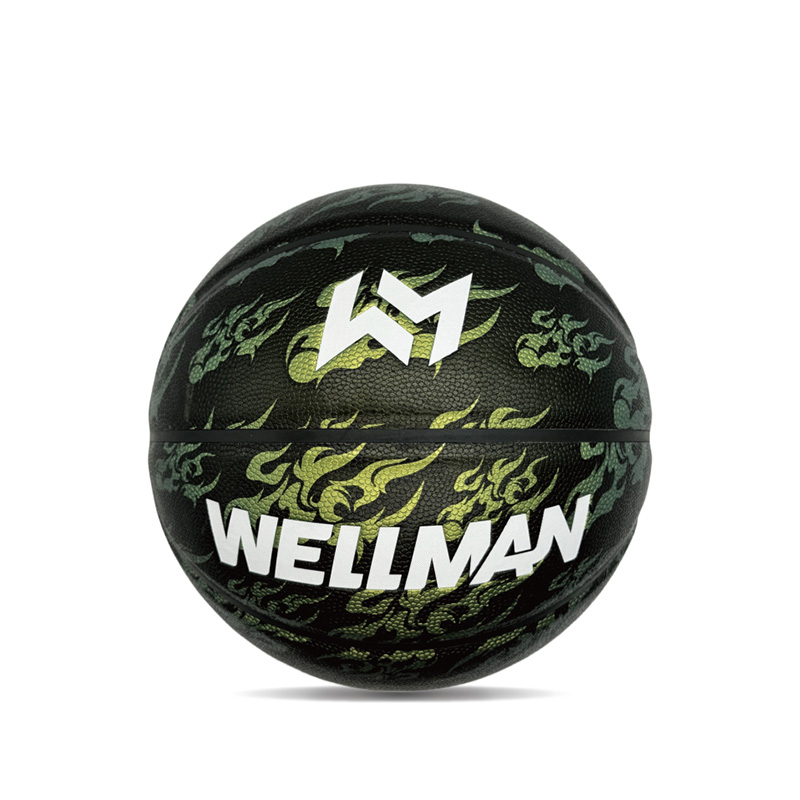In basketball, material is a key factor affecting feel, durability, and overall performance. Different courts, usage scenarios, and demographics have significantly different requirements for basketball material. Choosing the right material ensures every dribble and shot feels truly special.
1. Common Basketball Material Classifications and Characteristics
Currently, the mainstream basketball materials on the market are categorized into three types: synthetic leather, PU (polyurethane), and genuine leather, each suited to different scenarios:
• Synthetic leather basketballs: Offer a lower cost and moderate surface wear resistance, making them suitable for daily training on rough outdoor surfaces (such as concrete and plastic), offering excellent value. However, with long-term use, the surface is prone to wear and tear, and the grip will gradually deteriorate.
• PU basketballs: Offer a combination of softness and wear resistance, with a feel closer to professional-grade balls than synthetic leather. They are suitable for both indoor and outdoor use, whether on campus or in amateur competitions, making them a popular choice for the general public.
• Genuine leather basketballs: Made from natural leather, they offer a smooth feel and excellent sweat absorption. They mold to your hand with increased use, making them the top choice for professional tournaments and high-end indoor sports. However, be careful to avoid using them on rough outdoor surfaces, as friction can cause the leather to crack and the maintenance costs are relatively high.
2. Choose the right ball based on the intended use scenario
• For frequent training on campus or outdoors: Choose synthetic leather or highly wear-resistant PU Leather Basketball. These can withstand the high friction of concrete floors and ensure durability for extended training sessions.
• For amateur competitions or indoor sports: Mid-range or high-end PU or genuine leather basketballs are recommended. They provide a stable feel during play and enhance precision when shooting and passing.
• For children and adolescents: Choose lightweight, soft synthetic leather basketballs to reduce the strength required for dribbling and shooting while minimizing the impact of hard materials on joints.

3. Maintenance Tips for Extending the Life of Your Basketball
Regardless of the material, proper care can significantly extend the lifespan of your basketball:
-
Cleaning and Drying: Wipe away dust and sweat from the surface with a dry cloth after each use to prevent prolonged moisture from causing mold and cracking.
-
Air Pressure Control: Check the air pressure regularly (refer to the “Recommended Air Pressure” label on the ball). Excessive air pressure can accelerate surface wear, while excessively low air pressure can affect bounce and feel.
-
Storage: Avoid prolonged exposure to direct sunlight, high temperatures, or humidity. It’s recommended to store the basketball in a cool, dry place. Use a bag to minimize contact with sharp objects.
Choosing the right basketball material makes every touch a pleasure. If you’re struggling with choosing a material, please leave a comment in the comments section and we’ll provide you with a more accurate recommendation!
Summary
The choice of basketball material should be guided by the specific application. For outdoor practice on rough surfaces, choose wear-resistant synthetic leather or cost-effective PU. For indoor events and high-end stadium competitions, prioritize high-quality genuine leather or mid-to-high-end PU. For children and adolescents, lightweight, soft synthetic leather is ideal. Furthermore, careful cleaning, pressure control, and light and moisture protection are essential for both choosing the right ball and using it effectively. Let your basketball accompany you through every dribble and shot, unleashing your passion and providing a long-lasting, high-quality sports experience.


 English
English русский
русский Español
Español Deutsch
Deutsch عربى
عربى 中文简体
中文简体

